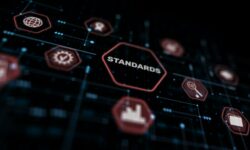Working From Home: Temporary or Forever?
In short, from a technical standpoint, monitoring center operators working from home is not a huge challenge to implement and maintain; it’s all the other rules that make it a challenge.

When COVID-19 was recognized as a pandemic in January, and the immediate reaction for most businesses was to move people home to work, the monitoring industry realized it faced a host of problems that stood in the way.
Technical problems not withstanding – for the most part, they were manageable. The industry faced a unique stumbling block: UL had no standard, guide or methodology based on which monitoring center operators could work from home.
In short, from a technical standpoint, working from home is not a huge challenge to implement and maintain; it’s all the other rules that make it a challenge.
UL was asked by the industry to come up with a temporary solution to the problem earlier this year, and the organization responded very quickly. In March, it came up with what it called a “guideline document” that would allow certificated centers to have operators working from home.
Inherent in any new additions to UL 827 allowing working from home during emergencies, there are many very controversial items that have to be worked out. These would include mandatory backup power, dual Internet connections and data security, just to mention a few.
At the time of this writing, the document is out for public review and will get voted on in the very near future. Currently, it appears many of the items like battery-backup and dual Internet will not be required during emergencies (Learn more about the guideline document in this month’s Fire Side Chat).
However, as in most infomercials, there is a “But wait, there’s more…,” which would be a work-from-home standard that would allow monitoring centers to permanently move some or all of the staff to a work-from-home model, the second focus under review.
Currently, The Monitoring Association (TMA) has a workgroup preparing for the UL 827 Technical Committee to start a project defining requirements for implementing working from home permanently, but it’s likely that this won’t be in full swing until later this year.
Not surprisingly, as a result of all this work a lot of pros and cons have come to the fore, but very surprisingly, they have made us all realize that what was a presumably unique and temporary situation is now reshaping our future in a determined way.
The pros are all the things you would imagine: lower real estate costs, a broader pool of talent that is no longer limited to an area around your center, scheduling should be easier, better employee retention is likely … the list goes on and on as you begin to visualize the changing world. And it’s not like our industry is the first or only one to move people home.
There are many organizations that have been doing this for better than 10 years. Big companies like Apple and JetBlue have had staff working from home for a long time and have figured out how to do it.
Still, the list of cons is equally long. Central stations have always been the bedrock of our industry with redundant power, communications, people, facilities, computers, networks … the very things that define security in our time.
Most centers’ actual uptime rivals even the biggest companies out there. The knee-jerk reaction will be, “How can we have people at home meet the same requirements as we have built up over the last 100 years?” And the bigger question is, “Do we?”
But the real question is whether the stakeholders like subscribers, dealers, AHJs, insurance carriers and others deem these changes as even remotely acceptable. I think it’s going to take a while for all this to shake out, but I can hear the ads now: “You won’t hear dogs barking or kids crying in the background when we call to help you.”
In all honesty, I think we will end up with a hybrid solution where certain groups of accounts will be monitored from home and others won’t.
Groupings could be types of accounts or signals, they could be grouped by UL classifications like UL Burg or UL 2050, and they could also be by dealer or by type of customer such as residential or commercial. Most centers have the ability to route signals to the appropriate agents based on these rules without a lot of work.
No matter how all this shakes out, there are changes coming to our industry, and they are not that far away either. If this is something you feel passionate about, I encourage you to participate in the UL public comments; every comment has to be responded to individually and anyone can comment.
UL is a consensus-based standards group and will do what the industry wants done, so now is your chance to help guide us through the next phase of monitoring.
If you enjoyed this article and want to receive more valuable industry content like this, click here to sign up for our FREE digital newsletters!

Security Is Our Business, Too
For professionals who recommend, buy and install all types of electronic security equipment, a free subscription to Commercial Integrator + Security Sales & Integration is like having a consultant on call. You’ll find an ideal balance of technology and business coverage, with installation tips and techniques for products and updates on how to add to your bottom line.
A FREE subscription to the top resource for security and integration industry will prove to be invaluable.








